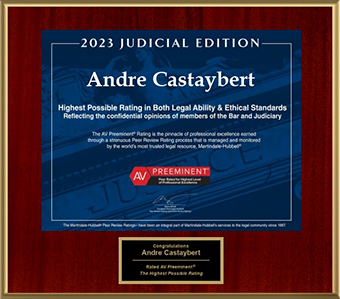NLRB Rejects Bergdorf Shoe Sellers’ Petition for Micro-Bargaining Unit
August 1, 2014 – This past week, the National Labor Relations Board maintained that women’s shoe sales associates from two different departments within Bergdorf’s New York store could not constitute one single micro-bargaining unit. The unanimous decision in Neiman Marcus Group, Inc. d/b/a Bergdorf Goodman, 361 N.L.R.B. No. 11 (July 28, 2014), which affects 35 employees in the store’s Salon shoe department and 11 in the Contemporary shoe department, hinged on the employees’ lack of a “’community of interest.” The board pointed out that the employees worked in separate departments, had different job classifications, and reported to different supervisors. Retail employers seeking to prevent certification of interdepartmental micro-bargaining units can take away important lessons from this decision.
A COMMUNITY OF INTEREST
To constitute an appropriate bargaining unit, not only must the employees concerned be readily identifiable as a group, they must also share a community of interest. While the board recognized that the employees were identifiable as a group because of their function – women’s shoe sales associates – it found that they did not share sufficient criteria to fully constitute a community of interest. The employees were organized into different departments; there was no interchange between the two departments; and the employees had limited contact with each other. The NLRB pointed out that the Salon employees did not report to the same supervisors as those in Contemporary, and cited a lack of evidence that Salon and Contemporary employees share any distinct skills or received specialized training beyond the general orientation program. Thus, NLRB concluded:
[While] some factors favor a finding of community of interest, they are ultimately outweighed, on these facts, by the lack of any relationship between the contours of the proposed unit and any of the administrative or operational lines drawn by the Employer (such as departments, job classifications, or supervision), combined with the complete absence of any related factors that could have mitigated or offset that deficit.
The NLRB contrasted its recent decision regarding a petition in Macy’s Inc., 361 NLRB No. 4 (July22, 2014). In that earlier decision, the board affirmed an acting regional director’s decision that employees in a Macy’s department store’s cosmetics and fragrance department constituted an appropriate micro-bargaining unit. In Macy’s, the two sets of employees worked in the same department, were directly supervised by one manager, sold cosmetics and/or fragrances, had limited contact with other sales employees and had the same commission-based pay structure and benefits.
STEPS TO PREVENT MICRO-UNITS
While the NLRB will allow micro-bargaining units within the workplace when a community of interest can be established by the employees, there are steps to reduce the likelihood of such a finding:
- Employees in different departments should not share direct supervisors.
- Stores should discourage the “sharing” of employees across departments.
- Specialized training of employees in a department should be done separately from other departments.
For more information about this and other NLRB decisions, visit the NLRB website.
To learn how CASTAYBERT PLLC can assist you with employment matters, explore our Employment Law Practice Area.
DISCLAIMER: Because of the generality of this update, the information provided herein may not be applicable in all situations and should not be acted upon without specific legal advice based on particular situations.









